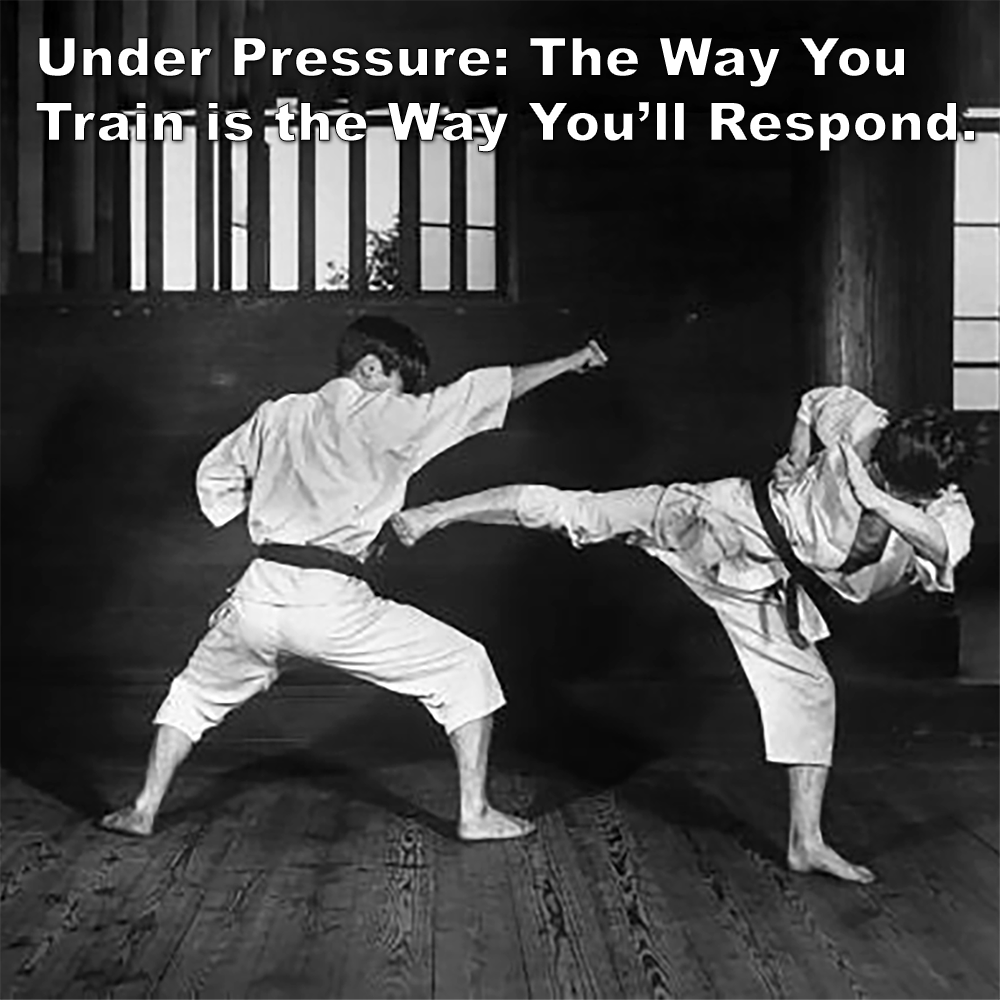
(Approx 2 minute 5 second read)
You will perform the way you train. This principle holds across martial arts, sports, and virtually any skill-based activity or profession. Training shapes not only physical habits but also mental responses under pressure.
.
In response to one of my articles about an ill-advised self-defense technique performed for a grading, someone commented, “It still doesn’t mean that the training itself has no value.”
.
Um, no.
.
I’ve written extensively about training in the right context. Why? Because I am passionate about getting it right. I would hate for a student of mine to be involved in an altercation and find their training failed them when they needed it most.
.
When you train consistently in a specific way, your body and mind create neural pathways that turn actions into “automatic” responses. For example, if a martial artist always trains to pull their punches, that habit will likely emerge instinctively in real confrontations – even if a real fight demands more intensity and direct action. Essentially, you’ll fall back on what feels natural and well-rehearsed, especially when adrenaline and stress levels are high.
.
Training doesn’t just condition the body; it conditions the mind to make certain decisions under pressure. Training a specific way also fosters a mindset: a boxer expects to stand and strike, while a judoka expects to grapple and throw – and that mindset strongly influences responses in real situations.
.
When the stakes are high, like in self-defense, stress significantly affects our ability to think clearly. Instead, we rely on what we’ve drilled to the point of familiarity. This is why high-intensity or realistic training is so necessary. If your training includes unpredictability, resistance, and real pressure, your body and mind will be more equipped to react intuitively under those conditions.
.
The saying “train like you fight” is especially relevant because context matters. If your training context matches real-world needs, you’re better prepared to apply what you’ve practiced in a way that’s appropriate for those real-world scenarios.
.
The bottom line is that the way you train is the way you’ll respond, whether in the dojo, in competition, or in self-defense. Training consistently and purposefully for the outcome you want ensures that you’re not caught relying on inappropriate habits when it matters most.
.
It’s great that martial arts offer so much variability, with methods and styles to suit every interest and need. But if self-defense is the goal, make sure your training reflects that reality. Technique, intensity, and mindset must align with the demands of real-world encounters, not just what works in the dojo. Context (my favorite word) is everything.
.
Train for the reality you want to be ready for. Because in those critical moments, you will not have the luxury of picking and choosing which parts of your training will hold up. The foundation you’ve built is what will come through – and it’s up to us as instructors, and as practitioners, to make sure that foundation is solid, effective, and true to its purpose.
.
By Adam Carter – Shuri Dojo.
